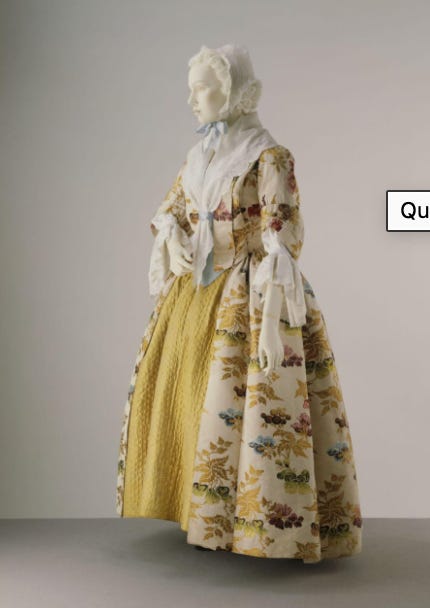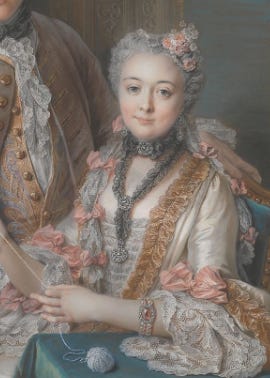Reframing a Newsletter
Turning it into a gateway for learning about the past in new ways.
Resuming this. I’m working on a hybrid historical fiction/memoir, and the history needs to come alive if I’m to write about it so vividly the reader is taken there.
First, I need to learn more about the day-to-day fort life in the early 18th Century. I contacted University of Michigan and Michigan State University, but had no luck with either one for papers or documents—which was a bit of a surprise. Then, I contacted the Michigan State Archives and learned they have two diaries written by officers’ wives—one from the late 18th century and one from the early 19th century (Thank you, Rachel!!). This was great news. (I’m also activating my Professor Emeritus status with Ball State University to access their phenomenal library.)
I found a book, The Social Life of Scotland in the Eighteen Century (Vol. 1) by Henry Grey Graham. Originally published in 1899, a reprint is available. I have to say, it’s written in an interesting style. Not narrative or like a scientific report, but almost conversational, and packed with information. It creates a vivid portrayal of many, many aspects of life and culture in Scotland and the people. I’ve just finished the first chapter (“Country Society and Country Life, 1700-1750”).
One of the interesting discussions in that first chapter was British attitude of that time, to Scotland’s geography. According to Social Life in Scotland, the incredible vistas and mountains were not seen as breathtaking or beautiful. To their eyes, such scenes appeared as “chaos,” unruly, and dangerous. The author refers to “a savage land” (p.2). Domestic landscaping around homes at that time would have been in planted in reassuringly symmetrical designs. Only later, in the Romantic period, would the wild nature of trees, lakes, and hills be percieved as majestic and inspiring.
I will be reading the fort commander’s work closely for his opinion on the natural world surrounding the fort.
Historic Empathy
I know many writers do a variety of things to become more empathic with their historical topic. Famously, Lin-Manuel Miranda wrote parts of Hamilton in Aaron Burr’s bedroom. I thought it might be helpful to do this as well. So, I’m ordering a gown in British colonial style (“a la l’anglaise”) from a maker on Etsy—or somewhere. I’ve been referencing the “Fashion History Timeline”. Richly illustrated with paintings, engravings, satirical cartoons, and photos of fabric swatches from designers notebooks, it is an incredible resource.


The continuing, essential question remains, as a writer: Why does she matter to me? I now have two general paths or tracks, and will say more about those later.
Aside:
I had my first lesson in French “lightness” dressage—a kind of horsemanship. It was very focused, only the first two or three introductory steps of in-hand work. Watching my teacher’s demonstrations, and then, my attempts, reminded me of the experience of trying to throw a pot on a potter’s wheel, after watching my ceramics professor’s demonstration. There are a HUGE number of things occurring simultaneously in both human and horse, that are (almost) invisible to the eye. Subtle and integral at the same time. I’m excited to have begun!
Note to my readers:
I plan on publishing a text post on Saturdays (or super late on Mondays!!), pictures and/or videos on Wednesdays.

